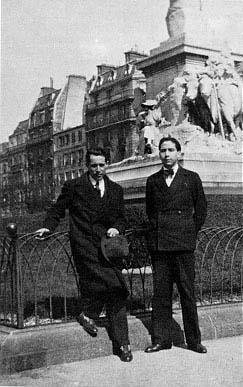 Luna Park, by Luis Cardoza y Aragon
Luna Park, by Luis Cardoza y Aragon
Translated by Anthony Seidman
Review by Kristin Kaz
I was four years old in kindergarten, which is when I learned how to identify coins using my fingers alone. Is this a common lesson for young capitalists? Hands thrusting into deep, dark cotton sacks, fingering the heavy ridges of a quarter, the slightness of a dime. The nickel and the penny were hardest to distinguish for a while, but I got the hang of it. Eventually.
And now I so rarely use my hands to explore the world.
I lost my way.
Where was I?
I rambled along singing!
This work, this collection, I’ll tell you first how it feels, and then how it feels.
Luna Park is a slim text, bound in cardboard and wrapped with a smooth, heavier stock. Is this recycled paper?[1] Difficult to say without my eyes, but there is something organic about it all. I drag my nails against the cover and it sounds like marbles. Like a rain drum. The pages themselves are slighter, still smooth, and they make a pud-pud-pud sort of thwacking sound against themselves as I flip swiftly through them. There is something nostalgic about the presentation. I have it. There I am, at the start of a new school year, wrapping text books in paper bags. This is the comfortable, familiar part of the process. This is what my fingers and nose can tell me about how this work feels.
This is what my eyes can tell you.
 Luna Park (1924, 2016) is Luis Cardoza Y Aragón’s first collection of poetry. It is translated from the Spanish by Anthony Seidman, thrust into the thick of this decade’s hazy Twitter feed by Alan Mills, and steeped in the kinetic energy of Daniel Godínez-Nivón’s graphics.
Luna Park (1924, 2016) is Luis Cardoza Y Aragón’s first collection of poetry. It is translated from the Spanish by Anthony Seidman, thrust into the thick of this decade’s hazy Twitter feed by Alan Mills, and steeped in the kinetic energy of Daniel Godínez-Nivón’s graphics.
From this critical living, restless,
A new soul has flourished:
Tender and strong,
Beautiful and sweet,
Like a flower of steel.
The beauty of a work like Luna Park is its ability to transcend time and space – or, rather, the ability to so clearly encapsulate the speed at which we hurtle through time, through space; the push-pull of experience and innocence; the jarring, grotesque specter of age that stalks us through the funfair.
The one who doesn’t reside in the future doesn’t exist.
The future started yesterday.
My third reading of Luna Park is punctuated by the metronome of relentlessly tack-tacking fingers on an ergonomic keyboard. I put the book in my back pocket (this is a book that fits in your back pocket), where I keep it while I carry my cat through the house to the kitchen, where I pace back and forth, cat slung over one shoulder, left-handedly nosing my way through the experience of Luis Cardoza Y Aragón’s poetry.
La vie s’en va…
A woman, with her gaze,
Tells me:
“Live it up”
Life shouts out
“Follow that woman”
This is not poetry to be read passively, to be enjoyed on some quiet Sunday.
This is poetry that begs to be read in motion; this is poetry that pushes you up and out.
This is poetry of exile, of transcendence, of momentum, of vitality.
This is poetry that tells you to live.
So you live.
Luna Park is available now through Cardboard House Press.
Photo of Luis Cardoza Y Aragón and Carlos Mérida in Paris, 1927 from litearturaguatemalteca.org
[1] It is recycled paper.



